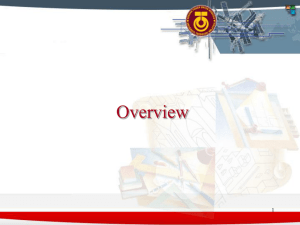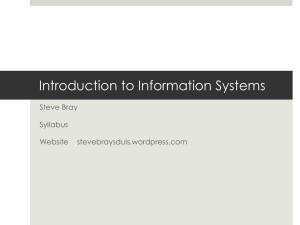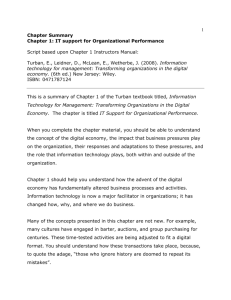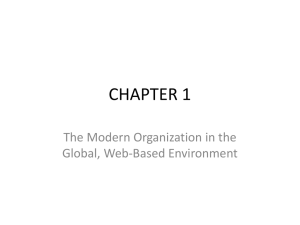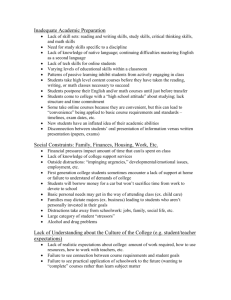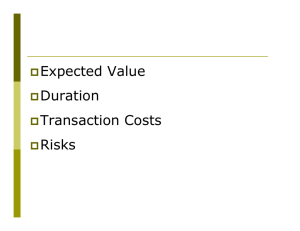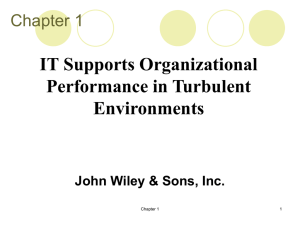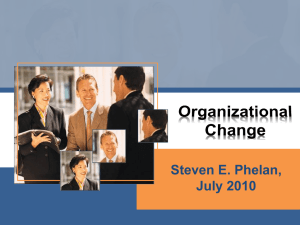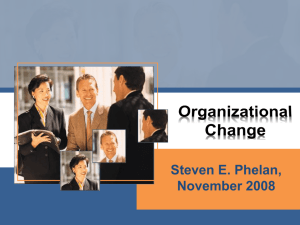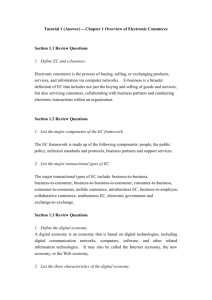IT and the Web-based Global environment Notes
advertisement
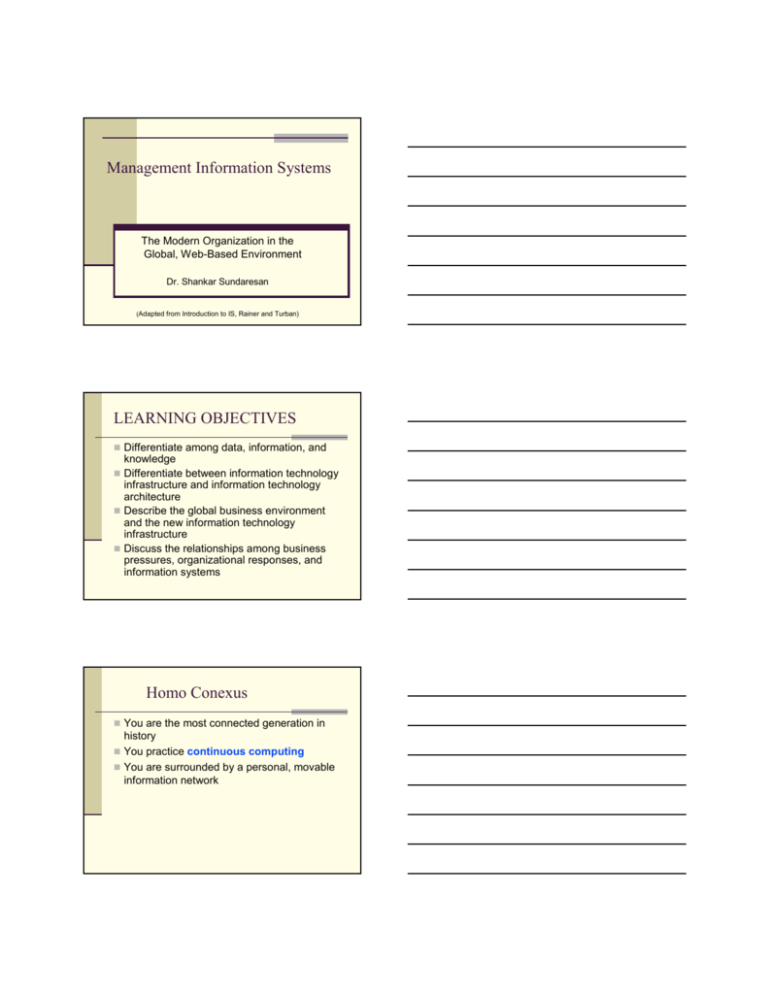
Management Information Systems The Modern Organization in the Global, Web-Based Environment Dr. Shankar Sundaresan (Adapted from Introduction to IS, Rainer and Turban) LEARNING OBJECTIVES Differentiate among data, information, and knowledge Differentiate between information technology infrastructure and information technology architecture Describe the global business environment and the new information technology infrastructure Discuss the relationships among business pressures, organizational responses, and information systems Homo Conexus You are the most connected generation in history You practice continuous computing You are surrounded by a personal, movable information network Information Systems: Concepts and Definitions Data Item Elementary description of things, events, activities and transactions that are recorded, classified and stored but are not organized to convey any specific meaning. Information Data organized so that they have meaning and value to the recipient. Knowledge Data and/or information organized and processed to convey understanding, experience, accumulated learning and expertise as they apply to a current problem or activity. Data and Information Data • Raw facts, numbers, text… Information • Data that have a particular meaning in a specific context • Is this data or information? GOOG 584.35 -1.5 04:00:03 01/22/2008 6,433,240 Information liquidity • The ease with which a system can convert data into information that business professionals can use – Systems in organizations often have low liquidity – Employees have to pick up the slack • A key role you will play as a business professional is using IT to convert data into information • Even with ‘perfect’ liquidity, people are still the critical resource. Data and Information: Examples Example • Encoded radio signals from Enigma • Submarine attack plans Example • Current temperature, moisture level, speed and direction of the air front near Lake Ontario • The weather forecast for NYC for the next three days Example • Sales numbers for three divisions of a computer manufacturer • Projected earnings for the company Example • Evidence of the existence of water on Mars • Pictures of the surface of Mars Information Systems: Concepts and Definitions (continued) Information Technology Architecture A high-level map or plan of the information assets in an organization, which guides current operations and is a blueprint for future directions. Information Technology Infrastructure The physical facilities, IT components, IT services and IT management that support an entire organization. IT Architecture of Online Travel Agency IT Components, IT Platform, IT Services, and IT Infrastructure The Global, Web-Based Platform Best represented by the Internet and the World Wide Web Enables us to connect, compute, communicate, collaborate, and compete everywhere and anytime Operates without regard to geography, time, distance, and language The Stages of Globalization (From Thomas Friedman in The World is Flat) Globalization 1.0 (from 1492 to 1800) Globalization 2.0 (from 1800 to 2000) Globalization 3.0 (from 2000 to the present) Thomas Friedman’s Ten Flatteners Fall of the Berlin Wall Netscape goes public Development of work-flow software Uploading Outsourcing Offshoring Supply Chaining Insourcing Informing The Steroids The Steroids Digital all analog content and processes are being digitized Mobile thanks to wireless technologies, computing, connecting, collaborating can be done anywhere Virtual the process of shaping, manipulating, and transmitting digitized content can be done at very high speeds, so that users do not have to think about these processes Personal Individuals can perform all these processes on their own computing devices The Great Convergence We are in a convergence of three powerful, technological forces: (1) Cheap and ubiquitous computing devices (2) Low-cost, high bandwidth (3) Open standards In essence, we have computing everywhere and anywhere, anytime and all the time, with access to limitless amounts of information, services, and entertainment. The Great Convergence (continued) We have the creation of a global, Web-enabled playing field that allows for multiple forms of collaboration – the sharing of knowledge and work – in real time, without regard to geography, distance, or, in the near future, even language. The field now includes some 3 billion new people, formerly digitally disenfranchised. Business Pressures, Organizational Responses, and IT Support Business Pressures Market Pressures Technology Pressures Societal Pressures Business Pressures, Organizational Responses, and IT Support Market Pressures The Global Economy and Strong Competition The Changing Nature of the Workforce Powerful Customers Technology Pressures Technological Innovation and Obsolescence Information Overload Societal Pressures Social Responsibility Government Regulation and Deregulation Protection Against Terrorist Attacks Ethical Issues Organizational Responses Strategic Systems Customer Focus Make-to-Order and mass customization See Reebok See Bodymetrics video E-business and E-commerce 1.4 Why Are Information Systems Important to You? Information systems and information technologies are integral to your lives Information systems offer career opportunities Information systems are used by all functional areas in an organization Misinformation about Information Systems Career Opportunities Myth #1: There are no computing jobs. Myth #2: There will be no IT jobs when I graduate. Myth #3: All IT-related jobs are moving offshore. Myth #4: IT salaries are lower due to cheap overseas labor. fig_01_02 fig_01_04 table_01_02
